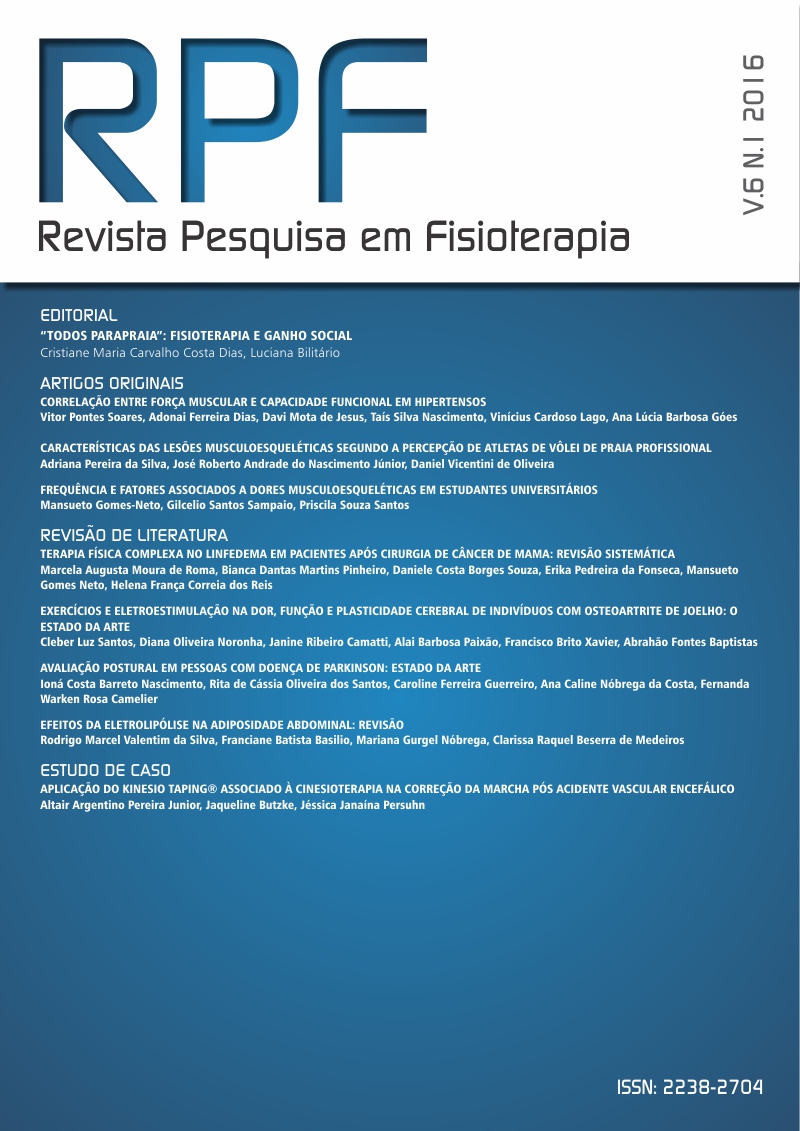POSTURAL EVALUATION IN PARKINSON´S DISEASE SUBJECTS: STATE OF THE ART
DOI:
https://doi.org/10.17267/2238-2704rpf.v6i1.750Keywords:
Parkinson´s disease, Posture, Photogrammetry, AgingAbstract
Introduction: Parkinson’s Disease (PD) is progressive neurodegenerative disease characterized by motor disturb disorders. PD causes afferent sensorial deficits resulting in postural control instability. Objective: To systematically arrange the knowledge on the main postural alterations in subjects with PD. Material and methods: A literature review was conducted using electronic databases from PubMed, SciELO, Google Scholar and Science Direct. The keywords picked were “Parkinson’s Disease”, “postural alterations”, “postural evaluation” and “photogrammetry”; the search was conducted both in English and in Portuguese. Results: The initial search resulted in thirty papers found, but twenty-three of them were excluded because they evaluated postural control or instability using posturography. Papers that evaluated equilibrium, trunk deviation and segmental abnormalities were also excluded from the final analysis. Seven papers, published in English or in Portuguese in the last ten years were selected for the final analysis. Conclusions: There is a predominant sagittal plan postural alteration associated with an arched posture in subjects with PD.



